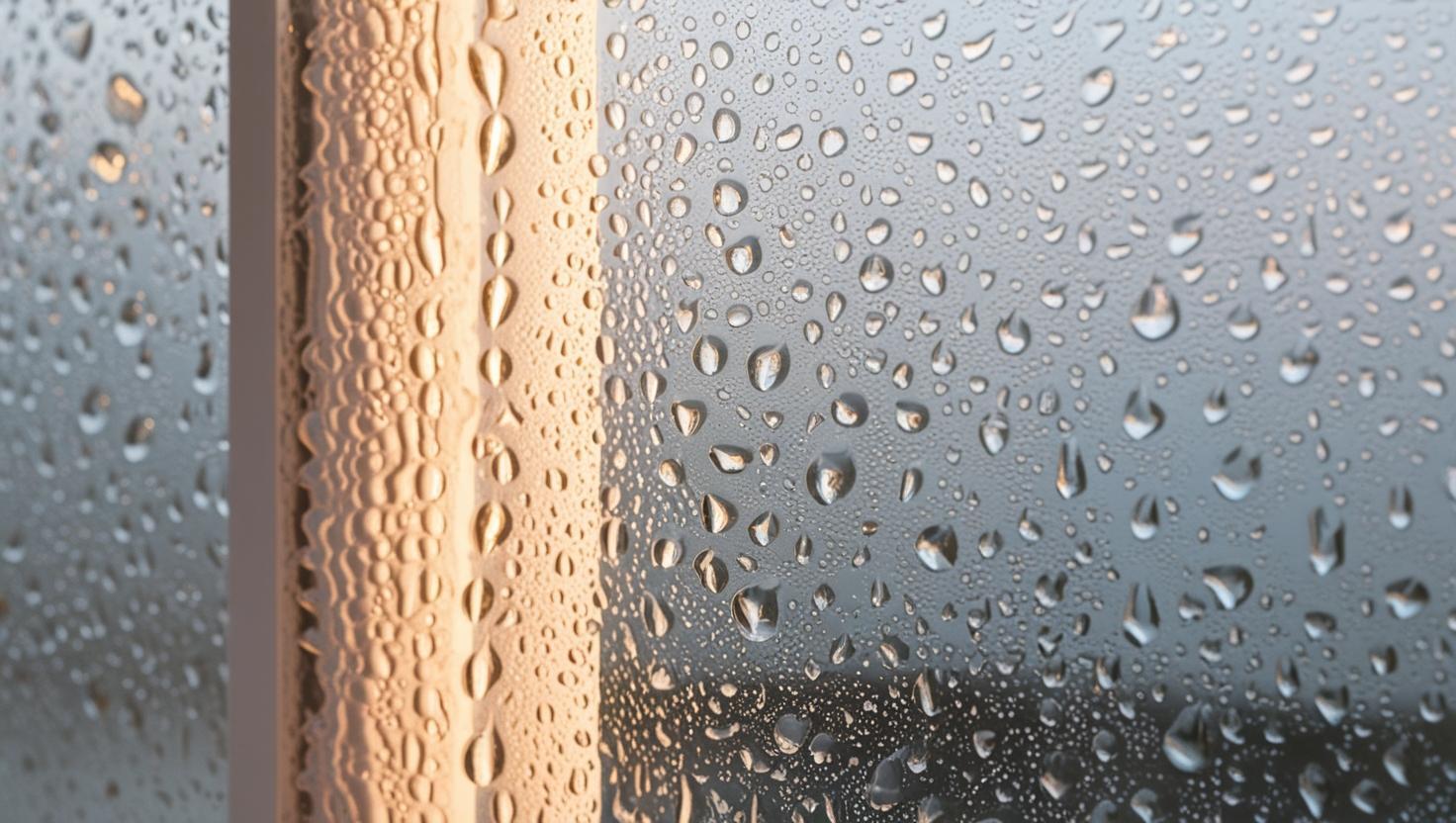Newsletter
Thermal comfort describes the condition of the mind that is satisfied with the temperature in its surrounding environment. Alongside indoor air quality (IAQ), it is considered a key factor of productivity and well-being in office buildings and other indoor spaces. And similarly to IAQ, the first step to establishing thermal comfort is to monitor its parameters. Only then can you make informed adjustments to improve the situation. This article will discuss thermal comfort monitoring in the workplace, looking specifically at how it works and how to make it a reality in your building.
The Importance of Thermal Comfort Monitoring
The term ‘thermal comfort’ might make you think that this quality is only about comfort, and not something that can lead to serious harm if neglected. However, a lack of thermal comfort can lead to a range of problems, such as adverse effects on health and reduced productivity. A thermal comfort monitoring system will allow you to properly understand the parameters that contribute to thermal comfort, and take preventative steps before these problems occur. Let’s look at some of the main concerns below.
Temperature Preferences, Neurodiversity, and Neurodivergence
It might surprise you to learn that not all people experience the same temperatures in the same ways. In fact, while 80°F might seem ideal to one employee, it will be intolerably hot to another. Likewise, you might think that 65°F helps you stay alert on the job, but others will be shivering. The fact is that humans are neurodiverse, and as no two people have brains that work in identical ways, no two will have thermal preferences that are exactly alike. For this reason, the ISO defines thermal comfort as only achieved when 80% of occupants are satisfied with the temperature.
Neurodivergent people, whose brains differ from the norm in more significant ways, will have strengths and challenges that differ from most. These challenges often include heat. Hyperesthesia and heat intolerance are neurodiverse conditions that can make the sensations of sweat, warmth, damp, or cold, unbearably stressful, making it very difficult for those affected to work if the temperature feels wrong.
Luckily, guidance exists for achieving temperatures that satisfy most people. The Occupational Safety and Health Administration (OSHA) recommends keeping office temperatures between 68°F and 76°F. It is essential to monitor thermal comfort parameters to ensure that temperature and humidity remain within acceptable ranges.
Maintaining a Productive Workforce
Overly hot or cold environments can have highly detrimental effects on productivity. For instance, one study of office workers found that perceived productivity is closely linked to thermal comfort. In this report, the nearer the temperature was to a worker’s preference, the higher their perceived performance. Conversely, they perceived themselves as increasingly unproductive when the office temperature was brought further from their preferred level.
What this tells us is that a thermally comfortable employee is a confident and productive employee, and that the costs of monitoring thermal comfort may be quickly offset by the increased performance of your staff.
Health, Mold and Viral Spread
Another way that thermal comfort monitoring can pay for itself is through reduced sick days. After all, humans have evolved to prefer certain temperatures because they are better for our health. Environments that are too cold or warm force our bodies to spend excess energy on temperature regulation, which reduces the energy available to our immune systems and leaves us at risk of viral or bacterial infection.
Some harmful organisms such as mold, and certain viruses and bacteria, thrive in warm, humid conditions, while others, like COVID-19 and Influenza shed for longer in cooler, drier environments. This is a delicate balancing act, and failure to get it right can result in sick building syndrome, where a building’s occupants are frequently ill, absenteeism is high, and productivity is low. However, by monitoring temperature, relative humidity, and airflow, you can help keep these levels within advised limits and minimize the risk to your staff.
Which Factors Are Involved in Thermal Comfort Monitoring?
Thermal comfort monitoring can appear deceptively simple. However, there are many factors that must be taken into account before you put your hand on the thermostat dial. As we’ve covered in our guide to thermal comfort in buildings, these include:
Dry-bulb temperature refers to the ambient temperature of the air, and is not affected by moisture. You can measure this parameter with a thermometer, or certain IAQ monitors.
Relative humidity is the ratio between the moisture content in the air and the maximum amount of moisture the air can hold at that temperature. This is measured using a hygrometer or IAQ monitor.
Mean-radiant temperature refers to the average temperature of the surfaces that surround a person in a given environment. In an office, these surfaces could include computers, printers, windows, and doors. You can measure this parameter using a globe thermometer.
Air velocity simply means the speed at which air is moving in a particular space. The faster the speed, the higher the rate that the air exchanges heat with the human body. You may not need any tools to monitor this parameter, but pay attention to drafts that may come from windows, doors, and vents.
Staff surveys are essential for accurate thermal comfort monitoring because this condition is only achieved once your staff are satisfied. Make these surveys anonymous so that your employees feel comfortable sharing their honest opinions.
Best Practices for Thermal Comfort Monitoring
The large number of factors that contribute to thermal comfort means that your monitoring practices must be precise and well-organized if you’re going to produce useful data and make effective changes. Let’s take a look at some best practices from the leading building standards, WELL v2 and LEED, along with Kaiterra’s own expert advice.
WELL
The WELL v2 building standard awards points towards certification for following their guidance on thermal comfort monitoring. The advice states that both dry-bulb temperature and relative humidity should be continuously monitored in all occupiable spaces.
WELL specifies that a real-time display of these parameters must be available to occupants. This can be done either through display screens, with at least one screen per 5,400 sqft, or through a website, with a sign per 5,400 sqft that shows where the information may be found.
LEED
LEED also requires applicants to monitor dry bulb temperature and relative humidity in order to receive points for thermal comfort monitoring. Sampling intervals for these parameters must occur every 15 minutes or less.
Unlike WELL v2, LEED demands that mean radiant temperature and air velocity are periodically tested as well. They permit the use of handheld meters for this purpose.
LEED also specifies that alarms must be put in place to alert staff when dry bulb temperature or relative humidity exceed acceptable levels, and that all monitors must be calibrated within the manufacturer’s recommended time frame.
Best Practices From Kaiterra Clients
Kaiterra’s Sensedge and Sensedge Mini come equipped to monitor dry bulb temperature and relative humidity. Over years of working with clients, we’ve seen the best results implementing the best practices listed below.
A high monitor density is vital to establishing thermal comfort, as hot and cold pockets in a room can be surprisingly small. We advise that each space be considered as unique when considering how many monitors to install. However, the more you have, the better your ability to understand and react to these parameters. Monitor maps are also better at higher density; they cost almost nothing and may put the minds of your employees at ease.
Monitor placement is also crucial for getting an accurate read of the environment. We’ve seen projects where monitors are fixed to ceilings - but as heat rises, the ceiling-level conditions are unlikely to tell you much about how your staff are feeling. Likewise, monitors exposed to direct sunlight will heat up much more quickly and may produce inaccurate readings. To avoid these pitfalls, keep your monitors out of the sun, and place them in the ‘breathing zone’, or between average head height when sitting and standing, roughly 3-6 feet from the floor.
Finally, it’s important to follow the manufacturer’s guidelines for installation. Monitors placed upside down or shielded from the parameters that affect most of the workplace will almost certainly produce false readings. Follow the installation instructions carefully and your staff will be on their way to thermal comfort in no time.
Be Like Goldilocks
Although the subjective nature of thermal comfort and its many contributing factors make monitoring a complex task, it is vitally important because of the adverse effects that unsuitable temperature and humidity levels can have on our physical and psychological health. Ensure that you’re up to the challenge by establishing a high monitor density, placing the monitors in the breathing zone, and making the data visible to employees. Be like goldilocks and don’t settle for temperatures that are too warm or too cold, but use the tools available to find the one that’s just right.
To learn more about how you can monitor thermal comfort effectively with modern IAQ sensor technology, schedule a call with a Kaiterra expert:






.png?width=200&height=148&name=Menu%20C%20(2).png)

.png?width=307&height=228&name=Menu%20-%20D%20(1).png)
.png)





